Attached files
| file | filename |
|---|---|
| 8-K - 8-K - ASPEN INSURANCE HOLDINGS LTD | u11014e8vk.htm |
| EX-99.2 - EX-99.2 - ASPEN INSURANCE HOLDINGS LTD | u11014exv99w2.htm |
| EX-99.1 - EX-99.1 - ASPEN INSURANCE HOLDINGS LTD | u11014exv99w1.htm |
Exhibit
99.3

| Aspen Insurance Holdings Limited April 28, 2011 Q1 2011 Earnings Conference Call AHL: NYSE |

| Safe Harbor Disclosure This slide presentation is for information purposes only. It should be read in conjunction with our financial supplement posted on our website on the Investor Relations page and with other documents filed or to be filed shortly by Aspen Insurance Holdings Limited (the "Company" or "Aspen") with the U.S. Securities and Exchange Commission. Non-GAAP Financial Measures In presenting Aspen's results, management has included and discussed certain "non-GAAP financial measures", as such term is defined in Regulation G. Management believes that these non-GAAP measures, which may be defined differently by other companies, better explain Aspen's results of operations in a manner that allows for a more complete understanding of the underlying trends in Aspen's business. However, these measures should not be viewed as a substitute for those determined in accordance with GAAP. The reconciliation of such non-GAAP financial measures to their respective most directly comparable GAAP financial measures in accordance with Regulation G is included herein or in the financial supplement, as applicable, which can be obtained from the Investor Relations section of Aspen's website at www.aspen.bm. Application of the Safe Harbor of the Private Securities Litigation Reform Act of 1995: This presentation contains, and Aspen's earnings conference call will contain, written or oral "forward-looking statements" within the meaning of the U.S. federal securities laws. These statements are made pursuant to the safe harbor provisions of the Private Securities Litigation Reform Act of 1995. Forward-looking statements include all statements that do not relate solely to historical or current facts, and can be identified by the use of words such as "expect," "intend," "plan," "believe," "do not believe," "aim," "project," "anticipate," "seek," "will," "estimate," "may," "continue," "guidance," and similar expressions of a future or forward-looking nature. All forward-looking statements address matters that involve risks and uncertainties. Accordingly, there are or will be important factors that could cause actual results to differ materially from those indicated in these statements. Aspen believes these factors include, but are not limited to: the possibility of greater frequency or severity of claims and loss activity, including as a result of natural or man-made (including economic and political risks) catastrophic or material loss events, than our underwriting, reserving, reinsurance purchasing or investment practices have anticipated; the reliability of, and changes in assumptions to, natural and man-made catastrophe pricing, accumulation and estimated loss models; evolving issues with respect to interpretation of coverage after major loss events and any intervening legislative or governmental action; the effectiveness of our loss limitation methods; changes in the total industry losses, or our share of total industry losses, resulting from past events and, with respect to such events, our reliance on loss reports received from cedants and loss adjustors, our reliance on industry loss estimates and those generated by modeling techniques, changes in rulings on flood damage or other exclusions as a result of prevailing lawsuits and case law; the impact of acts of terrorism and related legislation and acts of war; decreased demand for our insurance or reinsurance products and cyclical changes in the insurance and reinsurance sectors; any changes in our reinsurers' credit quality and the amount and timing of reinsurance recoverables; changes in the availability, cost or quality of reinsurance or retrocessional coverage; the continuing and uncertain impact of the current depressed economic environment in many of the countries in which we operate; the level of inflation in repair costs due to limited availability of labor and materials after catastrophes; changes in insurance and reinsurance market conditions; increased competition on the basis of pricing, capacity, coverage terms or other factors and the related demand and supply dynamics as contracts come up for renewal; a decline in our operating subsidiaries' ratings with Standard & Poor's ("S&P"), A.M. Best Company, Inc. ("A.M. Best") or Moody's Investor Service ("Moody's"); our ability to execute our business plan to enter new markets, introduce new products and develop new distribution channels, including their integration into our existing operations; changes in general economic conditions, including inflation, foreign currency exchange rates, interest rates and other factors that could affect our investment portfolio; the risk of a material decline in the value or liquidity of all or parts of our investment portfolio; changes in our ability to exercise capital management initiatives or to arrange banking facilities as a result of prevailing market changes or changes in our financial position; changes in government regulations or tax laws in jurisdictions where we conduct business; Aspen Holdings or Aspen Bermuda becoming subject to income taxes in the United States or the United Kingdom; loss of key personnel; and increased counterparty risk due to the credit impairment of financial institutions. For a more detailed description of these uncertainties and other factors, please see the "Risk Factors" section in Aspen's Annual Report on Form 10-K as filed with the U.S. Securities and Exchange Commission on February 25, 2011. Aspen undertakes no obligation to publicly update or revise any forward-looking statements, whether as a result of new information, future events or otherwise. Readers are cautioned not to place undue reliance on these forward-looking statements, which speak only as of the dates on which they are made. In addition, any estimates relating to loss events involve the exercise of considerable judgment in the setting of reserves and reflect a combination of ground-up evaluations, information available to date from brokers and cedants, market intelligence, initial tentative loss reports and other sources. The actuarial range of reserves and management's best estimate represents a distribution from our internal capital model for reserving risk based on our then current state of knowledge and explicit and implicit assumptions relating to the incurred pattern of claims, the expected ultimate settlement amount, inflation and dependencies between lines of business. Due to the complexity of factors contributing to the losses and the preliminary nature of the information used to prepare these estimates and reserves, there can be no assurance that Aspen's ultimate losses will remain within the stated amounts. |
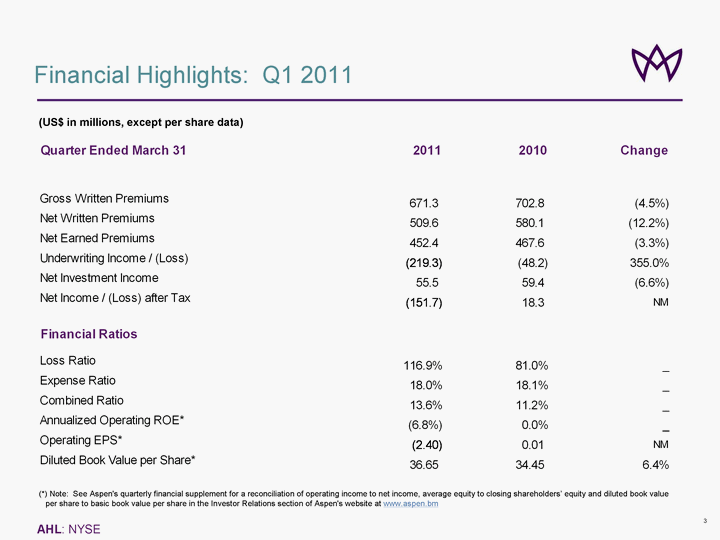
| Financial Highlights: Q1 2011 (US$ in millions, except per share data) (*) Note: See Aspen's quarterly financial supplement for a reconciliation of operating income to net income, average equity to closing shareholders' equity and diluted book value per share to basic book value per share in the Investor Relations section of Aspen's website at www.aspen.bm per share to basic book value per share in the Investor Relations section of Aspen's website at www.aspen.bm per share to basic book value per share in the Investor Relations section of Aspen's website at www.aspen.bm |
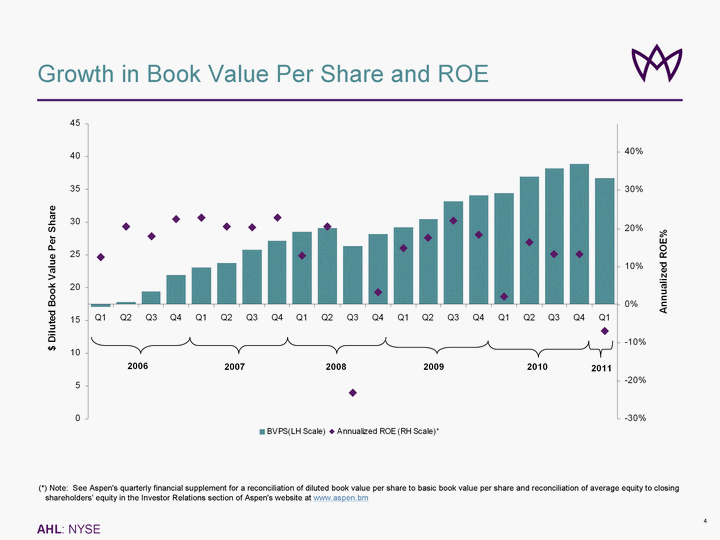
| Growth in Book Value Per Share and ROE (*) Note: See Aspen's quarterly financial supplement for a reconciliation of diluted book value per share to basic book value per share and reconciliation of average equity to closing shareholders' equity in the Investor Relations section of Aspen's website at www.aspen.bm Diluted Book Value per Share up 14% since December 31, 2009 |
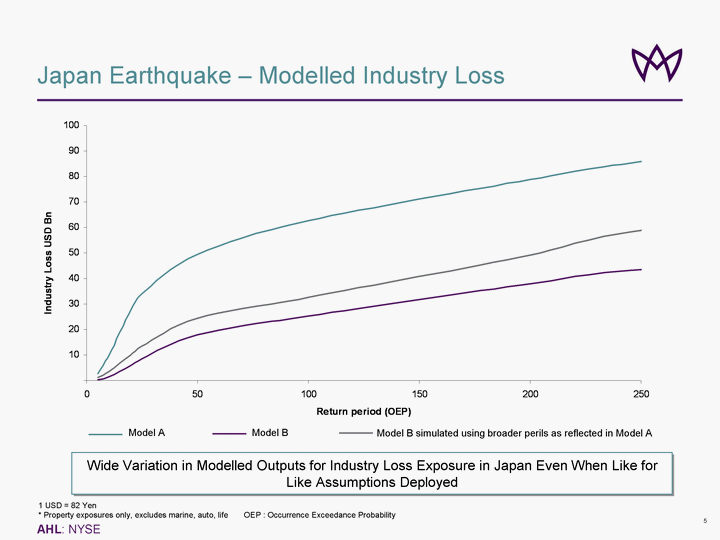
| Japan Earthquake - Modelled Industry Loss 1 USD = 82 Yen * Property exposures only, excludes marine, auto, life OEP : Occurrence Exceedance Probability Wide Variation in Modelled Outputs for Industry Loss Exposure in Japan Even When Like for Like Assumptions Deployed Model A Model B Model B simulated using broader perils as reflected in Model A |
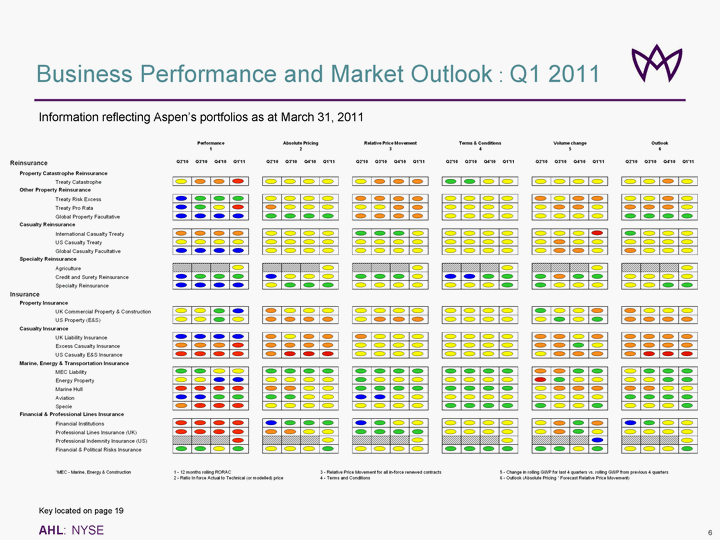
| Business Performance and Market Outlook : Q1 2011 Information reflecting Aspen's portfolios as at March 31, 2011 Key located on page 16 AHL: NYSE AHL: NYSE |

| 2011 New Zealand Earthquake Loss Estimate Magnitude 6.3 New Zealand earthquake occurred February 22, 2011 Initial estimate of losses around $60 million post tax and net of reinstatement premiums and applicable reinsurance, announced March 15, 2011 Aspen has fully collateralized retrocession cover of $50 million excess of $50 million in place Initial loss estimate is consistent with an industry loss of $12 billion (US$ millions) Class Gross Loss Property Catastrophe Reinsurance 109 Other Property Reinsurance 15 Total Gross Losses 124 Less Retrocession Cover ($50m xs $50m) (50) Class Net Loss Property Catastrophe Reinsurance 65 Other Property Reinsurance 9 Total Losses Gross of Tax 74 Reinstatement Income (6) Total Exposure 68 Less Tax (6) Total Exposure Net of Tax 62 |
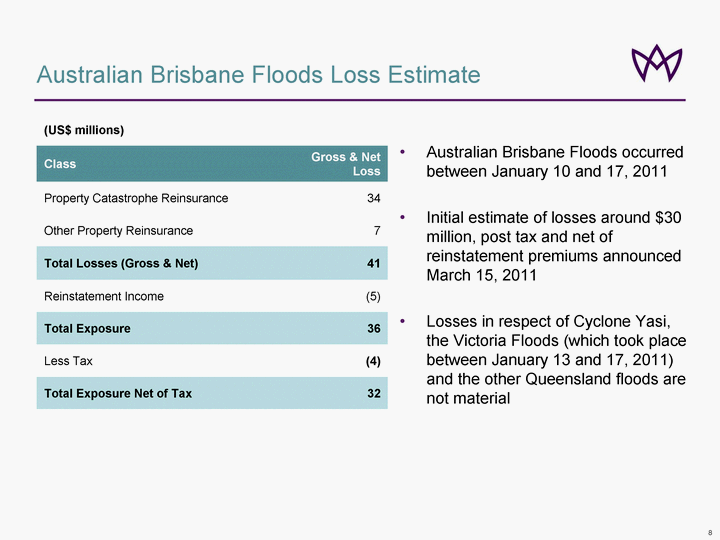
| Australian Brisbane Floods Loss Estimate Australian Brisbane Floods occurred between January 10 and 17, 2011 Initial estimate of losses around $30 million, post tax and net of reinstatement premiums announced March 15, 2011 Losses in respect of Cyclone Yasi, the Victoria Floods (which took place between January 13 and 17, 2011) and the other Queensland floods are not material (US$ millions) Class Gross & Net Loss Property Catastrophe Reinsurance 34 Other Property Reinsurance 7 Total Losses (Gross & Net) 41 Reinstatement Income (5) Total Exposure 36 Less Tax (4) Total Exposure Net of Tax 32 |
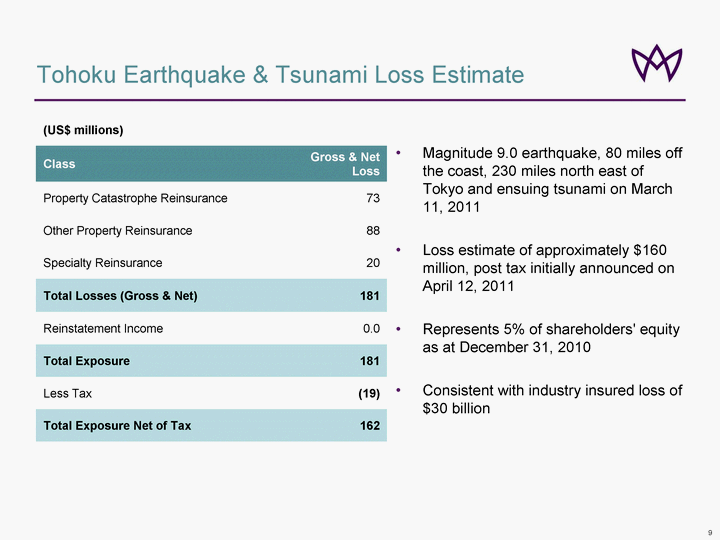
| Tohoku Earthquake & Tsunami Loss Estimate Magnitude 9.0 earthquake, 80 miles off the coast, 230 miles north east of Tokyo and ensuing tsunami on March 11, 2011 Loss estimate of approximately $160 million, post tax initially announced on April 12, 2011 Represents 5% of shareholders' equity as at December 31, 2010 Consistent with industry insured loss of $30 billion (US$ millions) Class Gross & Net Loss Property Catastrophe Reinsurance 73 Other Property Reinsurance 88 Specialty Reinsurance 20 Total Losses (Gross & Net) 181 Reinstatement Income 0.0 Total Exposure 181 Less Tax (19) Total Exposure Net of Tax 162 |

| Financial Highlights: Group Summary Q1 2011 Financial Highlights: Group Summary Q1 2011 |
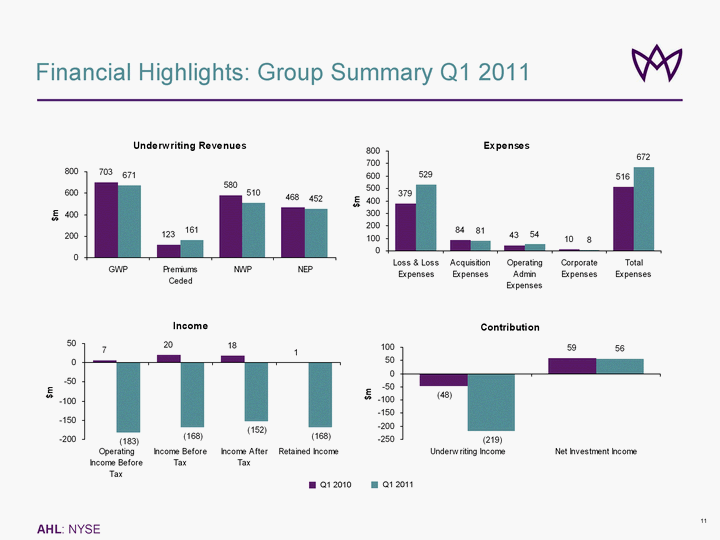
| Financial Highlights: Group Summary Q1 2011 Q1 2010 Q1 2011 |

| Key Performance Metrics: Q1 2011 n Q1 2010 n Q1 2011 |
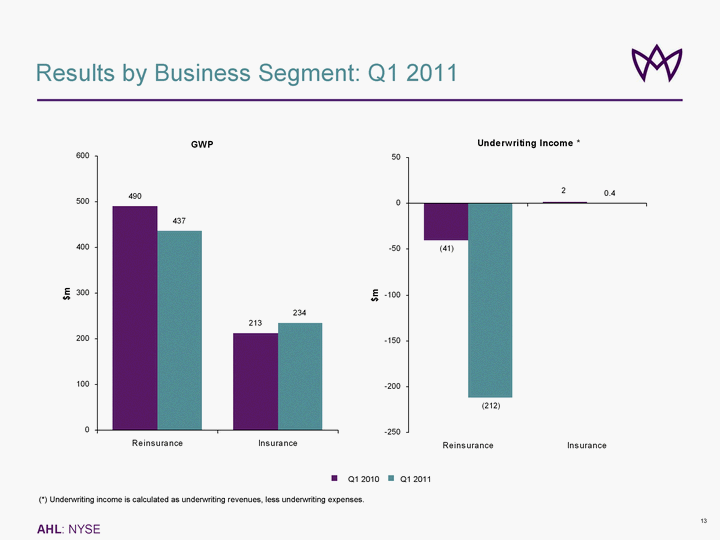
| Fixed Income Portfolio by Asset Type (US$ in millions) (US$ in millions) |
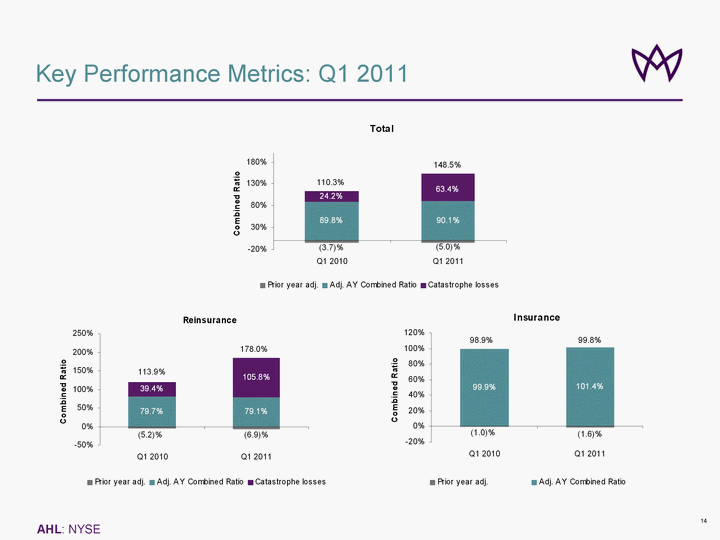
| Key Performance Metrics: Q1 2011 * * |

| Financial Highlights: Total Investment Return - Q1 2011 Annualized Investment Return for the Quarter of 1.7% - |

| Fixed Income Portfolio by Asset Type (US$ in millions) (US$ in millions) |
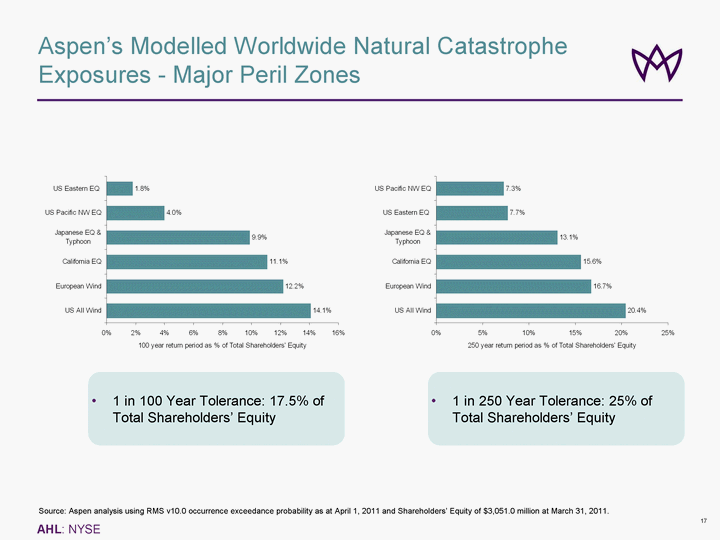
| Aspen's Modelled Worldwide Natural Catastrophe Exposures - Major Peril Zones Source: Aspen analysis using RMS v9.0 occurrence exceedance probability as at January 1, 2011 and Shareholders' Equity of $3,051.0 million 1 in 100 Year Tolerance: 17.5% of Total Shareholders' Equity 1 in 250 Year Tolerance: 25% of Total Shareholders' Equity Total Shareholders' Equity Total Shareholders' Equity Total Shareholders' Equity Total Shareholders' Equity |
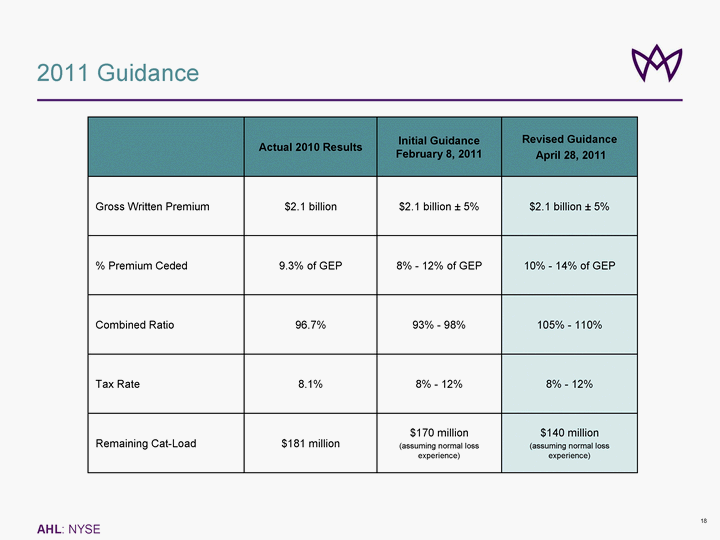
| 2011 Guidance Actual 2010 Results Initial Guidance February 8, 2011 Revised Guidance April 28, 2011 Gross Written Premium $2.1 billion $2.1 billion +- 5% $2.1 billion +- 5% % Premium Ceded 9.3% of GEP 8% - 12% of GEP 10% - 14% of GEP Combined Ratio 96.7% 93% - 98% 105% - 110% Tax Rate 8.1% 8% - 12% 8% - 12% Cat-Load $181 million $170 million (assuming normal loss experience) $170 million (assuming normal loss experience) |
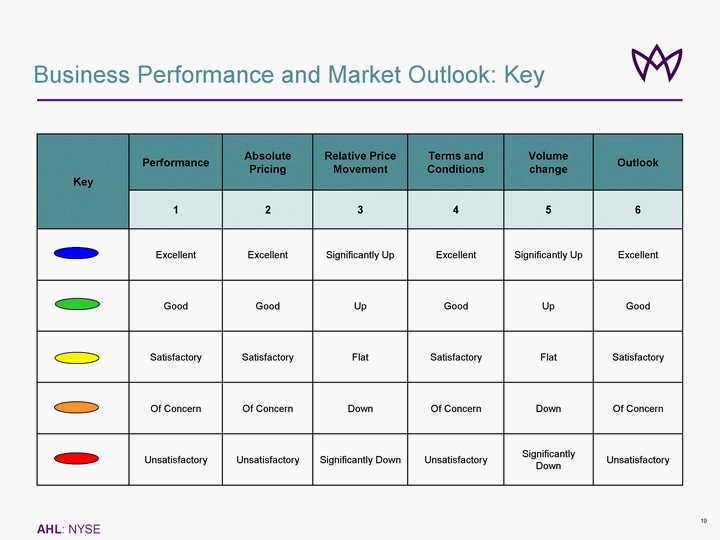
| Business Performance and Market Outlook: Key Key Performance Absolute Pricing Relative Price Movement Terms and Conditions Volume change Outlook Key 1 2 3 4 5 6 Excellent Excellent Significantly Up Excellent Significantly Up Excellent Good Good Up Good Up Good Satisfactory Satisfactory Flat Satisfactory Flat Satisfactory Of Concern Of Concern Down Of Concern Down Of Concern Unsatisfactory Unsatisfactory Significantly Down Unsatisfactory Significantly Down Unsatisfactory |
